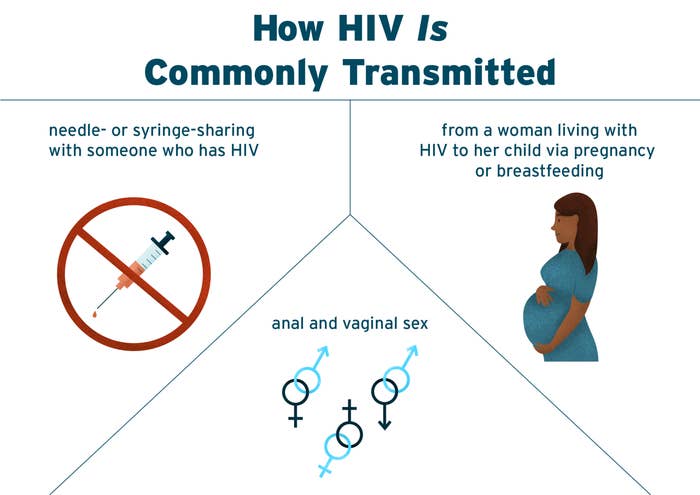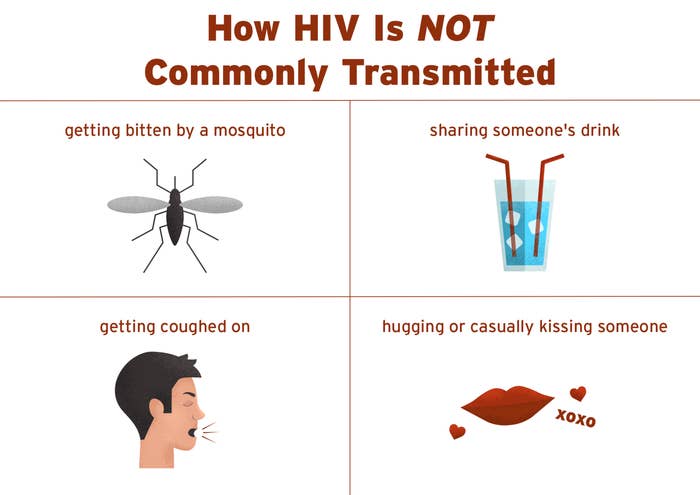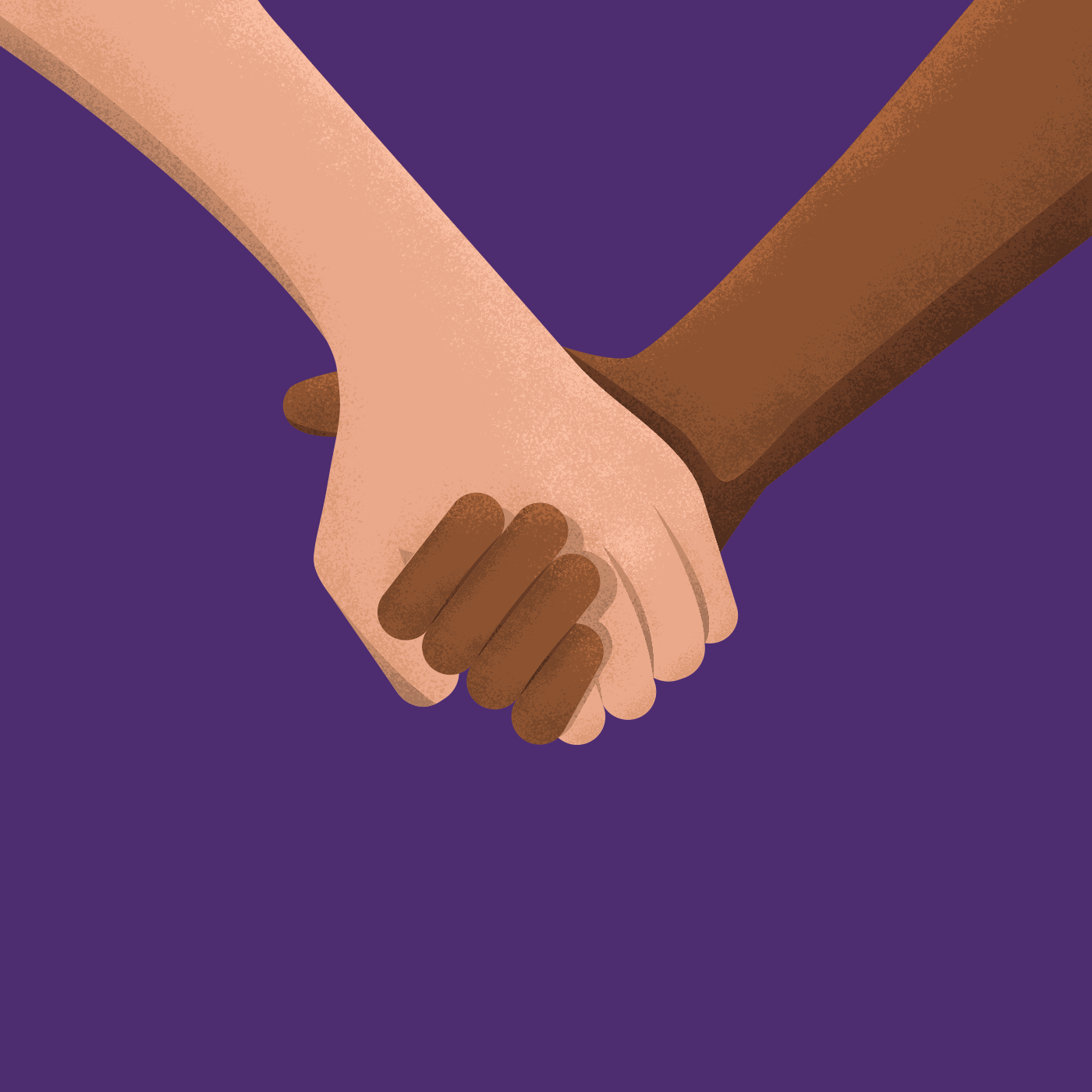OK, chances are you’ve probably heard of HIV, right?
HIV, or human immunodeficiency virus, is an incurable virus that attacks the body's immune system. If left undiagnosed or untreated, it can lead to acquired immunodeficiency syndrome, also known as AIDS.
HIV and AIDS have been present in the US since at least the mid- to late '70s, but we weren't aware of (and didn't have a name for) the virus until the early '80s.
Today, doctors and scientists know a lot more about HIV, its transmission, and treatment options than they did back then — but many people in the US and across the world don't know the essential facts and information. When we all do, that's how we can help stop the virus for good.
Fact: Anyone can get HIV, not just men who have sex with men (MSM).
Although some groups of people are at a disproportionate risk for HIV infection — including MSM, African Americans, and Latinx populations — the virus does not discriminate when it comes to age, gender, sexual orientation, race, or geographic location; anyone can get it. But you can't contract it just by walking around, sharing someone's drink, getting bitten by a mosquito, getting coughed on, or hugging or casually kissing someone. Only specific body fluids can transmit the virus: blood, semen/pre-seminal fluid, vaginal fluids, rectal fluids, and breast milk. Therefore, only specific kinds of activities carry a risk of transmission, including anal and vaginal sex, needle- or syringe-sharing with someone who has HIV, and from a woman living with HIV to her child via pregnancy or breastfeeding.


That’s why it’s important for everyone — EVERYONE — to get tested and know. their. status.
Getting tested is the ONLY way to know if you have HIV. Talk to your health care provider about testing options or look up clinics/services in your area. There are numerous affordable or completely free options available today.
The CDC recommends that everyone between the ages of 13 and 64 get an HIV test at least once, and those who are at a higher risk of getting HIV, such as sexually active MSM or people who share needles or syringes, should consider more regular testing (at least once a year and maybe even every three to six months).
Treatment for HIV has come such a long way.
Today, most people living with HIV can take just one to three pills per day as part of their treatment, which is a totally different story compared to the many pills first used to treat HIV, which had more side effects and were less effective.
This treatment is called antiretroviral therapy (or ART — yes, sorry, there are a lot of acronyms). For people living with HIV, sticking to HIV treatment every day is super important because it can lower the amount of HIV in their body. Sticking to treatment will ideally make it so that their viral load becomes undetectable, which basically means there is so little virus present in their body that it can't be measured by a test. Although there is no cure for HIV, talking to a health care provider and sticking to HIV treatment can help protect your health and lower the chance of passing HIV on through sex.
As a result, people who have HIV are living longer and healthier lives.
Starting and sticking to HIV treatment can lower the amount of HIV in the body. That can help protect and improve the immune system and keep HIV from leading to infections and AIDS-related cancers, so people can live longer, healthier lives.

Whether HIV-negative or not, everyone can help prevent HIV.
As mentioned earlier, people living with HIV must take their HIV medicine every day exactly as prescribed to get their viral load down to undetectable (so low it can't be measured by a test), which is super important. Current research shows that getting to undetectable and staying there means there's basically no risk of passing HIV on to a partner through sex, which is HUGE. In addition to HIV treatment and being undetectable, people living with HIV should practice safer sex and use condoms to help prevent the transmission of HIV and STIs.
Similarly, HIV-negative people should also use condoms, practice safer sex, have fewer partners, get tested/retested, talk to partners about their status, never share needles or syringes, and talk to their health care provider about medicines that may help prevent HIV infection before or after HIV exposure in order to lower their chances of getting HIV.
A combination of HIV treatment and proper condom use can go a long way in helping stop the virus.
Despite what's now known about HIV and its treatment, there’s still a lot of stigma around the virus.
People living with HIV are just that: people. And they need and deserve all of our support. That support begins with understanding the facts around HIV and not treating people differently than we did before their diagnosis. Listening, acknowledging, learning, asking questions, reassuring, and encouraging treatment are just a few of many ways you can support a friend or loved one who's living with HIV.
Understanding the facts around HIV can also go a very long way. It's important to remember that people living with HIV can live longer, healthier lives that can include sexual relationships and HIV-negative babies — and starting and sticking to treatment gives them a chance to live as long as someone without HIV.

Helping stop HIV starts with all of us.
We can arm ourselves with the essential facts and information, and we can fight stigma with these facts. People living with HIV can start and stick to treatment while HIV-negative people can take steps to stay HIV-negative and support others living with HIV — friends, family, and strangers.
And in this way, it's possible for EVERYONE to help stop the virus together.
So what are you waiting for? Help Stop The Virus today.
Design by Laura Hoerner
All facts from CDC and HIV.gov.
UNBC4928 1/18
